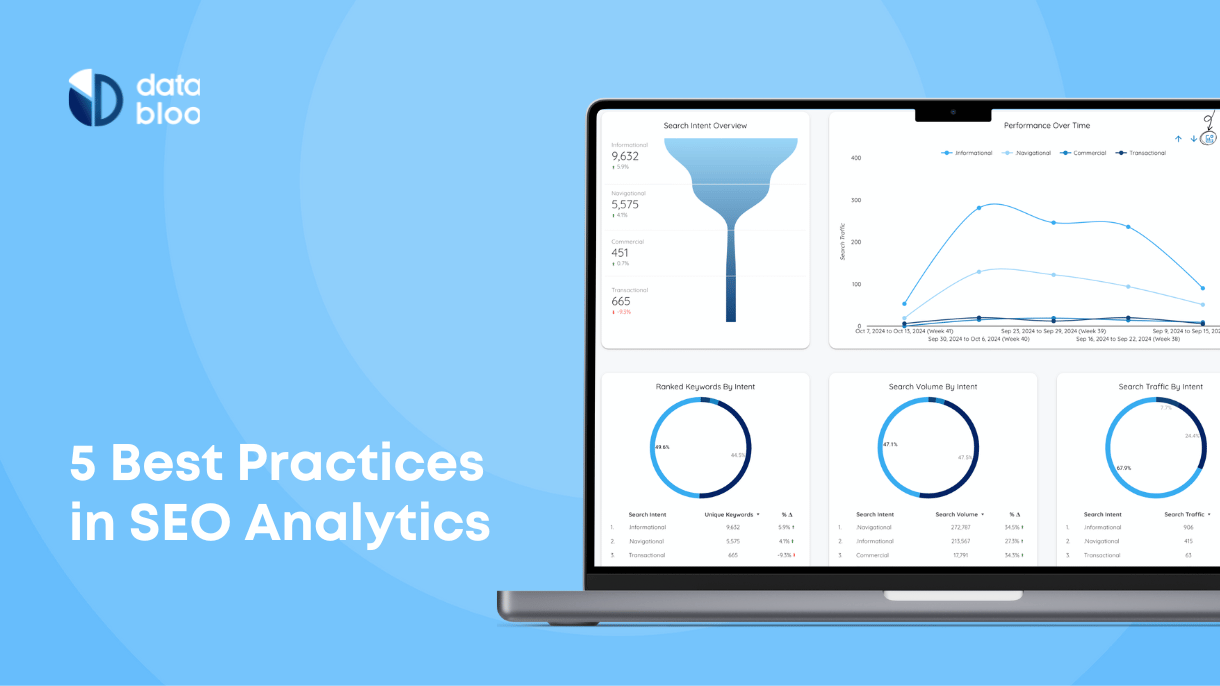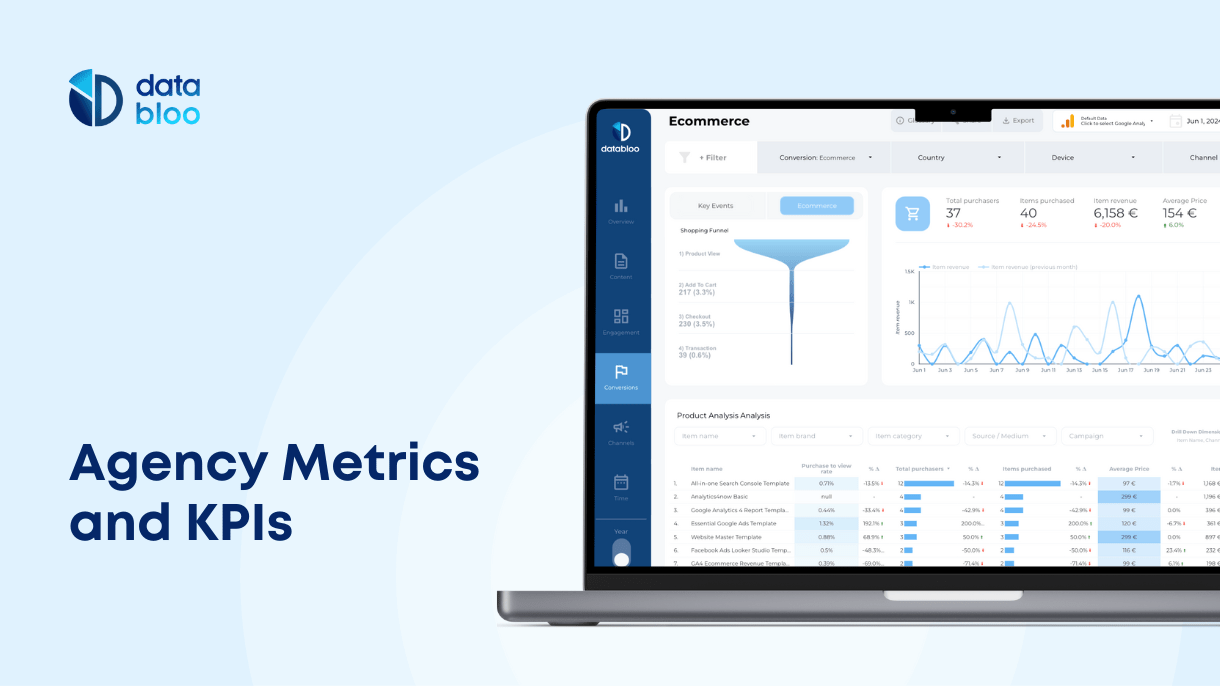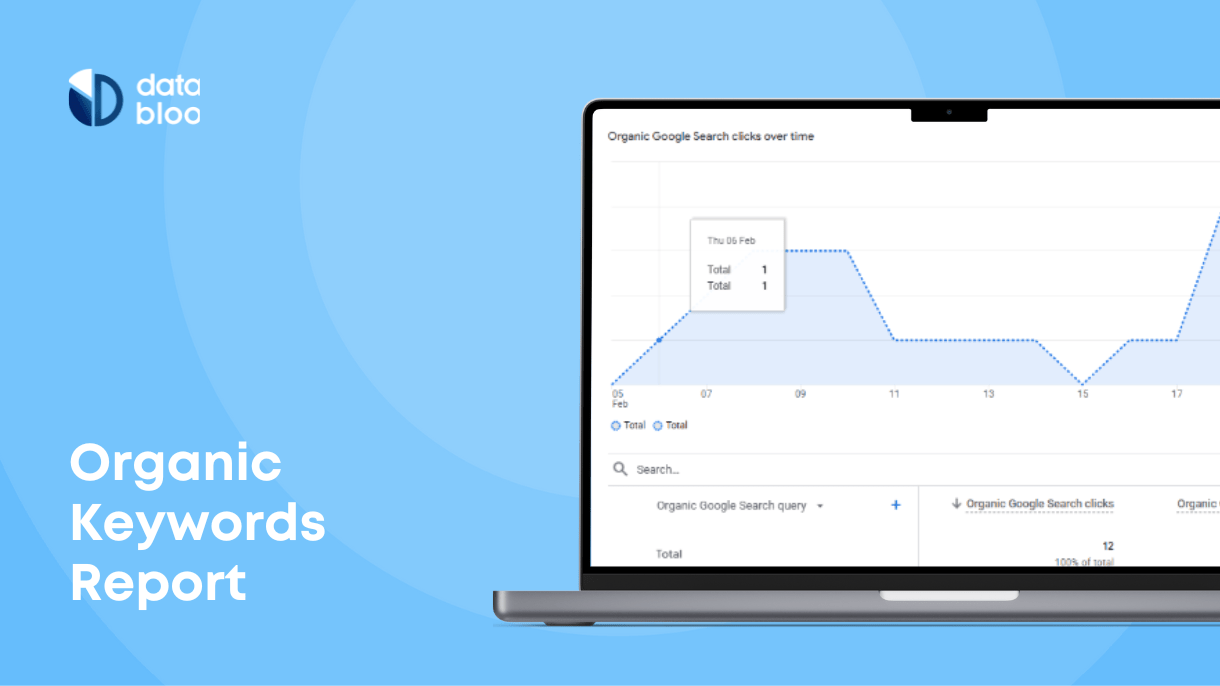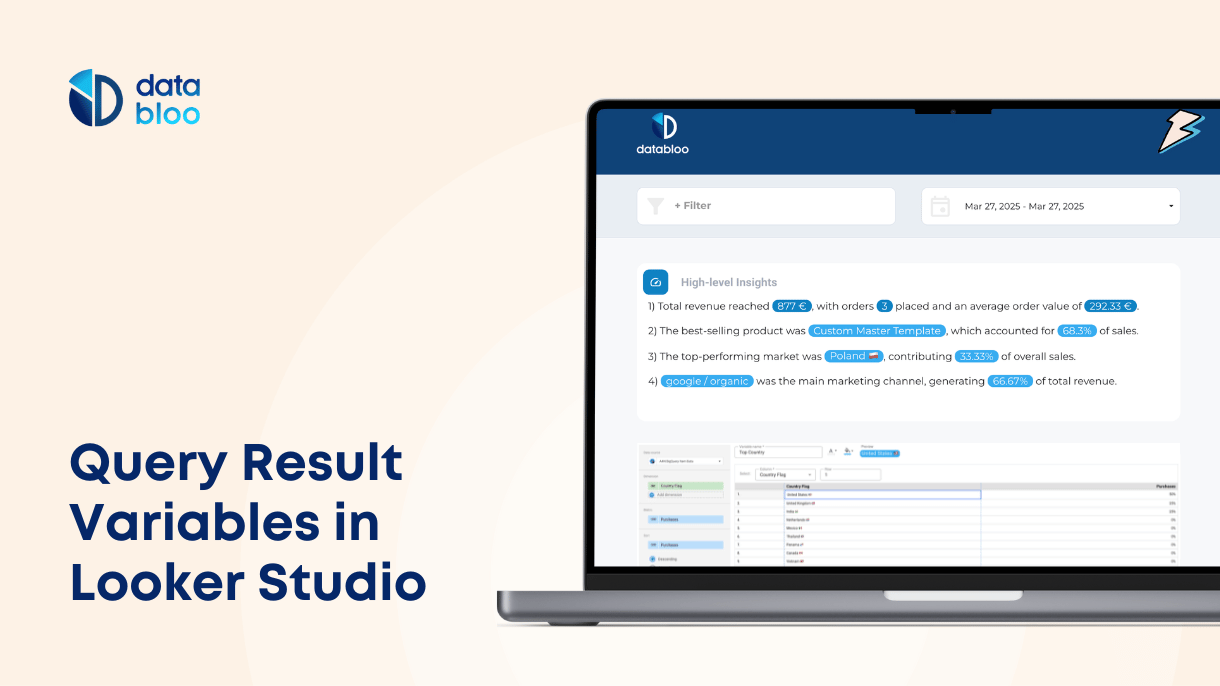Table of Contents
Two different people can look at the same SEO dashboard. The first one will say: “We’re on a good track!” and the other: “We’ve been stagnant for months.”
There’s a lot of noise in SEO, that’s true.
Focusing on different metrics can give you a completely different idea about your SEO progress.
That’s where your approach towards SEO analytics plays a pivotal role – by properly analyzing SEO data from multiple sources, you can always tell if you’re moving forward with your SEO strategy or simply feel like you do.
In this article we’ll go through 5 best practices in SEO analytics, covering the most effective and productive ways to analyze and interpret SEO data.
Let’s dive in.
1. Spot Long Term Trends Over Short Term Fluctuations
Even a month or two in SEO can be considered a short term period.
Here’s an example: you optimized a blog post and noticed an increase in traffic to this page within a week. That might seem like a positive result, and now you want to optimize dozens of pages with the same approach.

But the newly acquired traffic to this page can bounce back to what it was within a week or two, or worse, you might start losing traffic, meaning your optimization was not as successful. And yet, at this point, you’ve already spent resources and time to optimize a dozen of other pages the same way.
To avoid such a situation, always track the impact of your SEO campaigns and changes over different periods of time: short term impact and longer term, up to 6 months.
Another example might be how you look at organic traffic. It might seem that your traffic hasn’t changed for months, but if you compare the last 6 months to previous 6 months of traffic, you might actually see a steady increase of 10% and even 20%.
Surely, you can optimize a page or publish a new piece of content and immediately see positive results, even start getting more traffic within a few days, but only long-term .
2. Define Vanity Metrics For Every SEO Project
Sometimes we look at the SEO dashboard and don’t even notice that we pay attention to metrics that we should not be paying attention to. It just happens. Worse yet, you start using these vanity metrics to draw faulty conclusions.
Vanity metrics are metrics that don’t contribute to your business bottom line. Common examples in SEO can be: the number of published blog posts, the number of newly indexed pages, and sometimes even organic traffic can be a vanity metric.
We’ve seen cases where people focused on increasing organic traffic, and yet, no matter if the traffic doubled, or even tripled, the number of conversions and business sales stayed the same.

It goes to show that for every project, you will have different KPIs (key performance metrics) and different vanity metrics.
In fact, it’s clear understanding of both what you see as KPIs and what you see as vanity metrics that makes SEO analysis most efficient.
So next time you look at your SEO reports, ask yourself: do we really need this information in our dashboard?
3. Contextualize Data For Key Performance Metrics
The best SEO analytics reports come with some sort of summary or notes that serve as context for the numbers.
The reason for that is simple: we can interpret the same metrics very differently in different contexts.
For example, you observed a spike in organic traffic over the last month, but can’t explain what caused it. So you try to find connections: last month you launched a backlink PR campaign. This connection is somewhat obvious, and stays that way in your mind.
In reality, though, the company you paid to build links haven’t even started acquiring them yet.
A faulty connection created without a proper context will hurt your analysis in two different ways: you assigned more value to the link building agency without any proof of work AND you failed to find the real explanation of a traffic spike.
Always supply your monthly SEO analysis reports with some sort of context: what was done this month on page and off page, what was done during the previous month. Ideally, save this information somewhere for future reference.

3. Develop and Use SEO Personas in Analytics
Ecommerce and sales have been using buyer personas for decades now, optimizing conversion funnels and trying to better understand their target audience.
Personas can be useful in SEO analytics as well. In fact, pairing search personas and SEO analytics is extremely valuable.

Start thinking in terms:
- Why do people use this specific phrasing to search for information?
- What’s the real problem or challenge behind their search?
- How far in their search journey are they?
- What is the next page they might start searching for?
After answering these questions, you can start coming up with search personas. Don’t focus on their demographic details, but rather on their search habits.
Persona A: “This person is likely to perform multiple searches through multiple angles because there’s no much information on the internet about this topic they are interested in”
Persona B: “Always clicks the first links and tries to find answers to their query in the first paragraphs. Skims through text”
When you have enough personas developed and customized for your specific niche, start using them when analyzing your SEO performance.
Export your top ranking pages and most common keywords that people use to find them. At some point, Google algorithms decided that your page has what people search for when they enter the XYZ keyword. Try to see analytical data through the prism of Google searches.
For example, export your underperforming articles that show low traffic and analyze how well they satisfy your top 3 personas. Or analyze your organic traffic conversion, trying to understand which of your personas are more likely to convert.
Although it will be hard to attribute SEO success to detailed personas alone, you will always have a very important and useful context for your future SEO campaigns when performing SEO analysis from this new angle.
And, of course, personas will be extremely helpful for understanding user search intent.
5. Use SEO Analytics To Better Understand Search Intent
A case could be made that your success in SEO is directly connected to your understanding of search intent. The better you satisfy user search intent, the better your SEO performance is.
In fact, Google’s main job is to better understand why people search for specific things and offer the most appropriate piece of information or a web page that satisfies their needs.
That’s why, understanding search intent not only allows you to better understand how people search, but how Google works under the hood.
And SEO analysis is invaluable when it comes to decoding search intent.
What keywords are people using when they find your commercial pages?
What keywords are people using to find your informational content?
What is the difference between your commercial and informational content in terms of audience demographics data, audience engagement data?

Here are three ways to use SEO analytics to understand search intent:
Analyze Keyword Clusters by User Journey Stage
Group keywords into clusters based on their relevance to different stages of the user journey (awareness, consideration, decision). This helps in identifying what users are looking for at each stage and tailoring content accordingly.
Study Bounce Rates and Time on Page
Evaluate pages with high bounce rates or low time on page. If users are leaving quickly, it may indicate a mismatch between their intent and the content provided, signaling areas for content refinement.
Segment Traffic by Content Type
Compare the performance of different content types (e.g., blog posts, product pages, FAQs) in relation to specific keywords. Understanding which content types resonate with particular intents can guide your content strategy.
Track Conversions Against Search Queries:
Map specific search queries to conversions or desired actions on your site. Use this information to better understand which intents lead to sales engagement and highlight opportunities to enhance user paths or optimize for high commercial intent keywords.
Note: sometimes informational content needs to satisfy commercial intent as well. A good idea to find keywords with mixed intent is to see what informational pages of your website generate more conversions than other pages.





